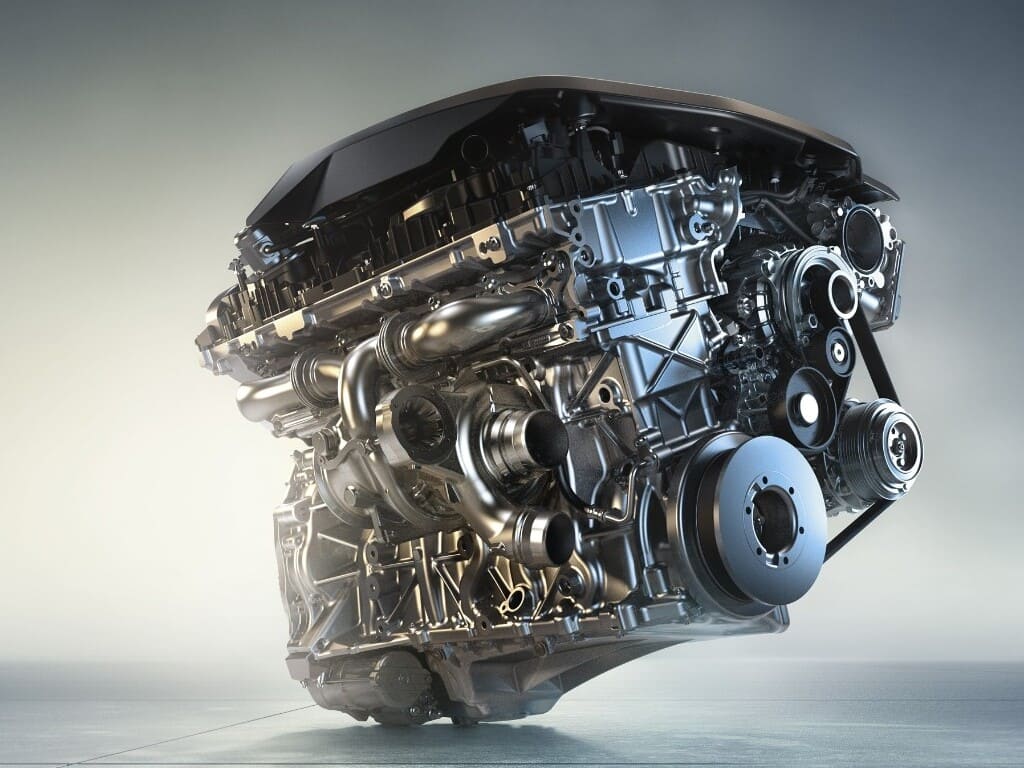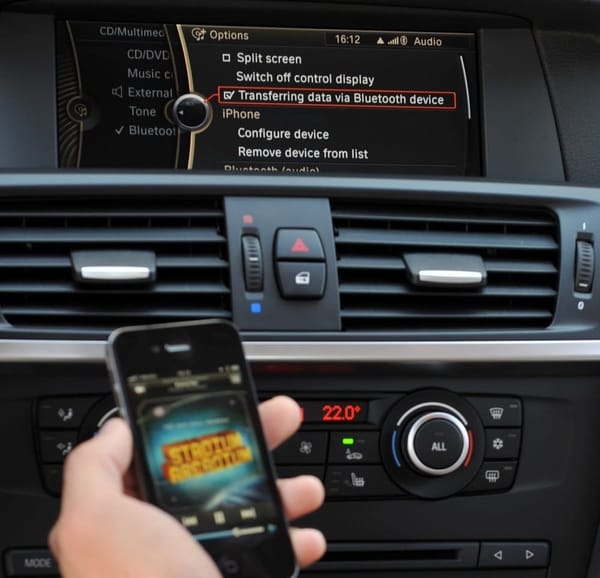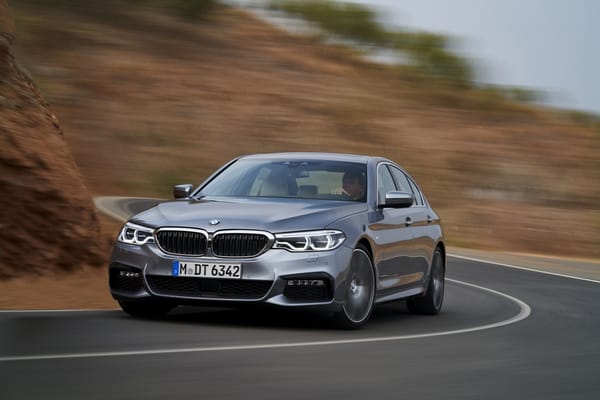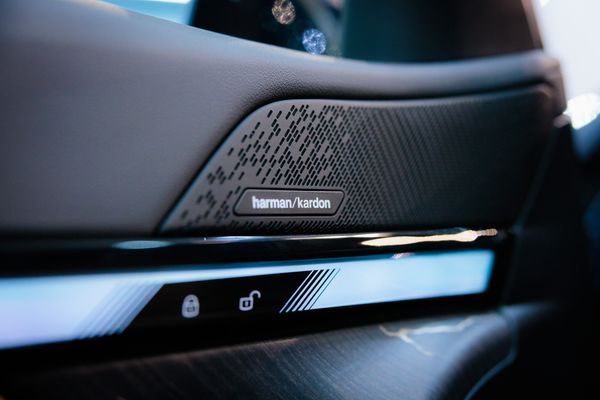Unplugged & Unraveled: Decoding BMW's Charging Malfunction Mysteries

Alright, gearheads, gather 'round because today we're diving deep into the heart of Bavarian engineering!
Ever had that sinking feeling when you’re cruising along in your BMW, and suddenly, the instrument cluster throws you a curveball?
Yup, we’re talking about that ominous "Charging Malfunction" light. If you think of your BMW as an athlete, this light is its way of saying, "Hey, I'm running out of breath here!"
In the vast world of intricate electronics and German over-engineering, this little message is your car’s way of crying out for help.
It's basically saying that something's gone wonky with its charging system. And just like you wouldn't ignore a friend gasping for air, you shouldn't ignore this light. Why? Because it's your Bimmer's lifeline.
If the charging system isn't working, your prized possession is essentially running a marathon with no water stations in sight.
Stay with me, and we'll get into the nitty-gritty of what's causing your beloved Bimmer to gasp for electrical breath and how you can bring it back to its prime! Buckle up; we're about to dive deep into BMW's electrical labyrinth!
The Usual Suspects: Unmasking the Culprits Behind the Charging Malfunction
Okay, BMW aficionados, it's time for a little detective work.
Now, before you start imagining yourself as Sherlock with a wrench (though, let's be honest, that would be pretty epic), remember: every mystery has its clues.
And in this electrifying saga of the "Charging Malfunction," we've got a lineup of usual suspects.
First on our list: the Torn Crankshaft Pulleys.
Think of these as the unsung heroes of your engine bay. Also known by their fancy names - harmonic balancer or vibration damper - these guys make sure your accessory drive belt and alternator are in a harmonious dance.
But when they tear?
It's like someone cut the music, and your alternator stops dead in its tracks. No dance, no charge. Simple as that.
Next up, we've got the Alternator Failures.
If the alternator was a band, it would be that classic rock group that's been touring since the 70s.
They're solid, they're reliable, but sometimes, especially with the older members, they just... give out. Particularly in those vintage BMWs with stories to tell and miles under their belts.
Then, there's the often-overlooked Drive Belts.
When these snap or slack, it's like tripping over your shoelaces. Everything comes to a halt, especially the alternator, which needs the belt to keep spinning.
Last, but certainly not least, we've got the brain behind the operation: the Charging System Management Systems, specifically the IGR or Intelligent Alternator Control.
It's the maestro, orchestrating the entire charging concert. And when it's out of tune? Well, the whole symphony suffers.
But don't fret, because knowing the problem is half the battle. Stay tuned as we delve deeper into each of these and find out how to get your Bimmer back in tune and on the road!
The Charging Malfunction SOS: Your BMW's Immediate Call to Action
Alright, folks, picture this: you're cruising down the highway, wind in your hair, your favorite tune blasting, and then suddenly - bam! - that pesky "Charging Malfunction" warning pops up.
It's like your BMW's equivalent of dropping its ice cream cone on a hot day.
A total buzzkill.
Now, while your first instinct might be to scream, "Not today, Satan!" and power through, here's where I'll say: Hold up!
Your Bimmer isn't just being dramatic; it's sending out an SOS.
And when a BMW sends out an SOS, you listen.
Here's the lowdown: when that warning flashes, your entire vehicle's electrical symphony is now freestyling, relying only on whatever juice is left in the battery. Imagine trying to run all your home appliances during a blackout using just a pocket battery.
Doesn't sound ideal, right?
That's what your car is grappling with.
Suddenly, everything - from your power steering to your water pump, from your swanky audio system to those critical injectors - is drawing power solely from the battery's reserves.
And trust me, that reservoir depletes faster than my coffee on a Monday morning. You've got mere minutes before your BMW decides to throw in the towel and take a nap right there on the road.
So, what do you do?
First, resist the urge to panic.
Then, think about safety.
Your number one priority should be figuring out the nearest safe spot to pull over. If you’re feeling a tad adventurous and want to push your luck, you can try shutting off non-essential electrical systems.
But spoiler alert: as the voltage dips, your car's going to start doing that for you.
Now, a special shoutout to the Intelligent Battery Sensor or IBS. It's like your car's very own energy accountant, keeping tabs on the battery's state of charge and deciding which electrical consumers need to be switched off to save power. It's a thankless job, but someone's got to do it.
A key thing to remember: if your BMW has electric power steering (EPS), you'll soon notice it becoming harder to turn.
Why?
Because the EPS system gets the boot first to save energy. And if you've got an older BMW with hydraulic steering, well, a torn pulley or drive belt might give you the same muscle-building experience.
So, in a nutshell, when that warning lights up, it's not just a suggestion - it's an urgent plea from your BMW.
Listen to it, act swiftly, and you'll avoid a whole lot of heartache (and potential repair bills). Stay with me, and we'll dive even deeper into the world of BMW charging systems and how to keep them singing in harmony!
Quick Fixes and First-Aid: Charging Malfunction Triage
So, you've pulled over, and before you reach for that emergency chocolate bar stashed in your glovebox (we all have one, right?), let's talk quick fixes.
Sometimes, the difference between a minor hiccup and a full-blown breakdown is a bit of timely troubleshooting.
Let's channel our inner MacGyver and get to it!
Step 1: The Alternator's Spin Test
Pop that hood and take a peek at the alternator pulley. With the engine running, is it doing the twist?
If it's not dancing along, you might be looking at a torn crankshaft pulley rubber.
It's like when your favorite record stops spinning – everything goes silent. In this case, no spin equals no charge.
Step 2: Belt It Out
While you're under the hood, give that drive belt a once-over. These belts are typically as reliable as grandma's secret cookie recipe.
But, if it's slack or broken, it's time for a replacement. Remember, a belt's function is akin to the strings of a guitar; without them, no music, or in this case, no power.
Step 3: Voltage Check
Grab your trusty multimeter (a tool every car enthusiast should have handy) and measure the voltage at the engine bay jump start points.
A healthy battery should read between 14V and 15V. If you're getting a low score, it's a clear sign that the charging system isn't making the grade.
Step 4: The IBS System Check
Alright, remember our friend the Intelligent Battery Sensor (IBS)? Time to give it a check. Unplug the IBS sensor at the negative battery lead and re-measure.
Without the IBS in play, your system will revert to a default mode, and you should see a voltage between 14V to 14.5V. If that's still not the case, we're inching closer to pinpointing the culprit.
Step 5: Cables & Grounds
Last but not least, examine your battery and ground cables. They're the lifelines, ensuring power flows seamlessly.
Any corrosion, disconnection, or damage here can throw a major wrench in the works.
Now, if after all this, you've discovered the problem lies with the alternator, give yourself a pat on the back.
You've just saved yourself a potential tow truck fee and a lot of guesswork. But if you're still scratching your head, don't fret.
We're about to dive deeper into the specific issues and their solutions. Hold tight; the diagnostic deep dive is up next!
The Deep Dive: Unraveling the Intricacies of Common Charging Malfunction Issues
Alright, folks, roll up those sleeves and put on your detective hats because we're about to dive headfirst into the maze that is the BMW charging system.
Let's break down each of our prime suspects from earlier and figure out how to get your BMW purring again.
Crankshaft Pulley Conundrum
We touched upon the crankshaft pulley's importance earlier, but let's delve a bit deeper. This isn't just a piece of metal spinning aimlessly. It's a critical component. Inside, there's a rubber insulator, acting as a cushion to dampen engine vibrations. But when this rubber goes rogue and breaks, it's like a band breaking up—no more harmony. The inner hub, which connects to the crankshaft, parts ways from the outer bit, and our alternator stops getting the juice it needs. The result? That dreaded "Charging Malfunction" message.
Diagnosis: Listen for erratic engine behavior, unusual vibrations, or a grinding noise. Sometimes, especially with certain engines like the B46, B48, or B58, you might even catch a whiff of burnt rubber.
Fix: Replace the crankshaft pulley and give all belt-driven components a thorough check for any collateral damage.
The Alternator Antics
The alternator is like the heart of your BMW's electrical system, pumping out power to keep everything running smoothly. But, like any heart, it can have its issues. Sometimes it's the internals, like worn-out carbon brushes, or sometimes it's the external components causing a ruckus.
Diagnosis: Check for voltage. As mentioned earlier, you're looking for readings between 14V and 15V with the engine running. If you're getting anything below, there might be an alternator issue.
Fix: Depending on the model and mileage of your BMW, consider either repairing or replacing the alternator. Remember, sometimes it's more cost-effective to get a new alternator than to repair an old one on its last legs.
Drive Belt Drama
When the drive belt isn't in its prime, it's like a singer losing their voice. The music stops. In this case, the alternator stops receiving power from the engine, and your battery stops charging.
Diagnosis: Visually inspect the drive belt for wear, tears, or slacking.
Fix: Replace the faulty drive belt and ensure it's tensioned correctly.
The Charging System Management Symphony
The Intelligent Alternator Control (IGR) is the maestro, orchestrating how the battery gets charged. When it's out of sync, the entire charging system can be thrown off balance.
Diagnosis: Look for issues in the Intelligent Battery Sensor (IBS) system or the IGR itself. Sometimes, it's as simple as a connection issue or a faulty component.
Fix: Depending on the problem, it might be a matter of replacing a component or ensuring everything's connected correctly.
In this world of interconnected systems and intricate components, your BMW's charging system is a marvel of engineering. But like any marvel, it can have its quirks.
Knowing how to identify and address these quirks can save you time, money, and a lot of headaches. So, next time that "Charging Malfunction" light comes on, you'll be armed with the knowledge to tackle it head-on. Onward to a perfectly charged ride!
In the Thick of Things: When the Charging Malfunction Gets Real
Alright, gearheads, by now we've traversed the nuts and bolts of the common issues. But what happens when the "Charging Malfunction" warning isn't just a passing inconvenience?
What if it's the prelude to a cascade of electrical gremlins ready to haunt your driving experience? Let's tackle the darker side of this issue.
The B+ Terminal Turmoil
Tucked away in the depths of your BMW lies the B+ Terminal, a critical juncture where the red battery cable connects the inside to the outside. These terminals, especially in models like E90, E60, E82, E84, and the notorious E93 convertible, can become corroded over time.
Diagnosis: If you're facing a multitude of electrical issues beyond just the charging malfunction, corrosion here could be the villain.
Fix: Clean up the corroded terminals, ensure a solid connection, and consider protective measures to prevent future corrosion.
The Jump Start Jitters
We've all been there - a dead battery and the need for a jump start. But, if done incorrectly, this act of vehicular resuscitation can lead to more harm than good. Improperly connected cables can blow the jump start point fuse.
Diagnosis: If your BMW won't start without jumper cables post a jump-start attempt, and you've got a "Charging Malfunction" warning, you might have blown this fuse.
Fix: Replace the fuse and always ensure proper cable connection when jump-starting.
Ground Points & Their Grumbles
The ground connections are the unsung heroes of your car's electrical system. They're pivotal in completing the electrical circuit. If these connections are corroded or compromised, you've got a problem on your hands.
Diagnosis: Check the main ground connections, typically located between the engine mount and body or between the transmission housing and body.
Fix: Clean up any corroded connections, secure any loose connections, and ensure a clear path for electrical grounding.
ECU Voltage Supply Shenanigans
The Engine Control Unit (ECU) is the brain behind your BMW's operations. But if it's not getting the right voltage, it can throw the entire charging system out of whack.
Diagnosis: If you're seeing a "Charging Malfunction" coupled with other erratic behaviors or fault codes, it could be an issue with the ECU's voltage supply.
Fix: Check for faulty relays or poor contacts within the ECU relay system. Replace or repair as necessary.
Power Steering's Silent Plea
Remember how we talked about the electric power steering (EPS) being one of the first systems to get shut down during a charging malfunction? Well, if you're facing a double whammy of charging issues and a sudden increase in steering effort, you're getting clear signals from your car.
Diagnosis: If your power steering feels heavy or non-responsive post a "Charging Malfunction" warning, the two might be linked.
Fix: Address the root cause of the charging malfunction, which will in turn restore the power to the EPS.
In conclusion, while your BMW is a marvel of engineering, it's not immune to issues.
And when these issues arise, knowledge is power. Armed with this deep dive into the intricacies of the "Charging Malfunction" problem, you're well-equipped to face any electrical challenge your Bimmer might throw your way.
The Bigger Picture: Understanding the ‘Why’ Behind Charging Malfunctions
Okay, fellow Bimmer enthusiasts, we've taken the scenic route through the intricate landscape of charging malfunctions.
But why do these issues arise in the first place?
Let's zoom out, shift gears, and understand the broader reasons behind these electrical escapades.
Wear and Tear: Nature's Course
Much like our knees creaking a bit more as we age, cars, too, experience the inevitable wear and tear. Components degrade, connections loosen, and belts wear thin. It's the natural life cycle of any machine.
Environmental Factors
Your BMW might be a German masterpiece, but it isn't immune to the elements. From corrosive road salts to the relentless heat of summer, environmental factors can accelerate component wear, especially for those parts exposed to the elements.
Manufacturing Quirks
While BMWs are built to exacting standards, no manufacturing process is 100% flawless. Occasionally, a batch of parts might not meet the typical longevity standards, leading to earlier-than-expected failures.
Maintenance (or the Lack Thereof)
Proper maintenance is to cars what regular exercise is to us – essential for long-term health. Skimping on regular check-ups or using subpar replacement parts can pave the way for future issues, including those in the charging system.
Technological Complexity
With advancements in technology, modern cars, including BMWs, are more intricate than ever. While this brings about enhanced performance and features, it also introduces more potential points of failure.
The Human Element
Let's face it: sometimes, mistakes happen. Whether it's a jump-start gone wrong, a DIY repair mishap, or a missed maintenance schedule, the human element can play a significant role in the onset of charging malfunctions.
Wrapping Up
Understanding the root causes behind charging malfunctions isn't just about playing the blame game.
It's about proactive prevention.
By recognizing these broader issues, you can take steps to ensure your BMW remains the well-oiled machine it was designed to be.
In the vast world of automotive intricacies, knowledge truly is power. As we close this chapter on charging malfunctions, remember that with every warning light or hiccup, your BMW is communicating with you.
Listen to it, understand it, and you'll enjoy miles and miles of seamless driving pleasure.
Safe travels!





